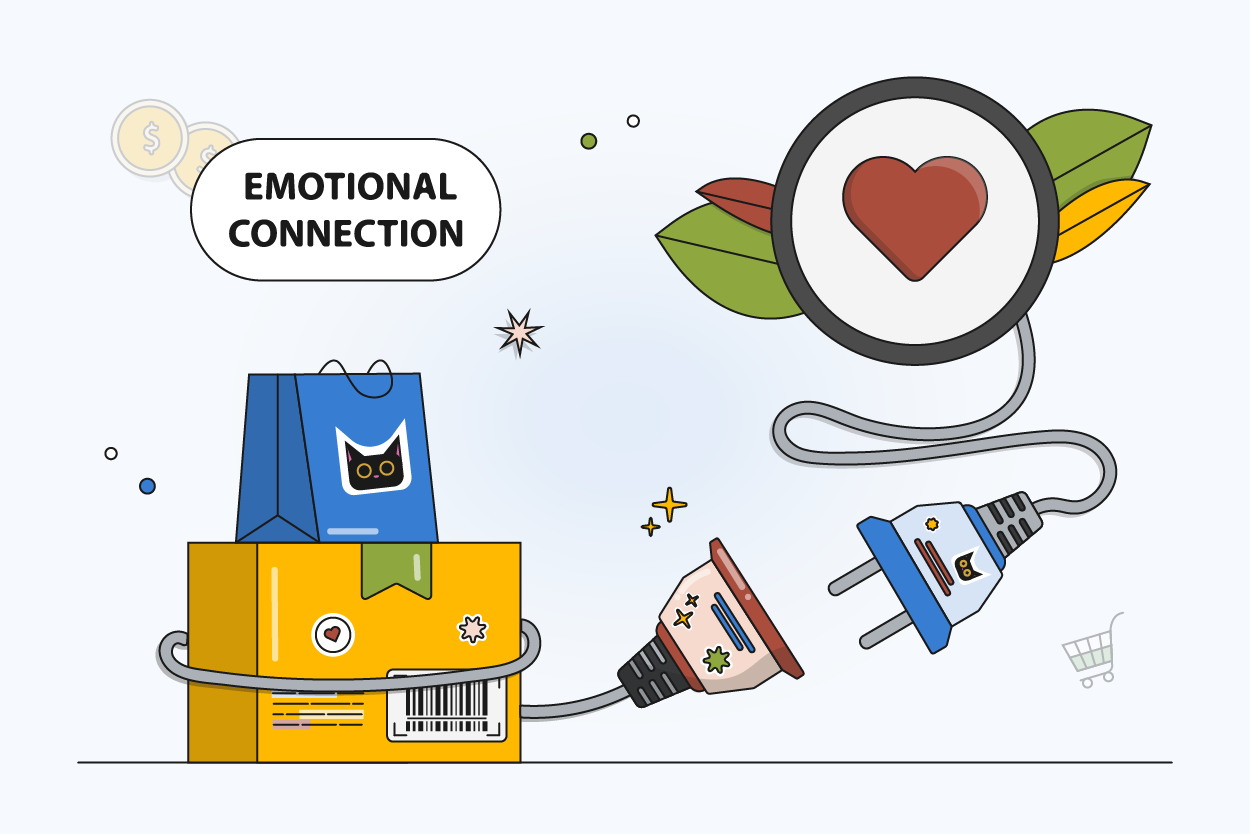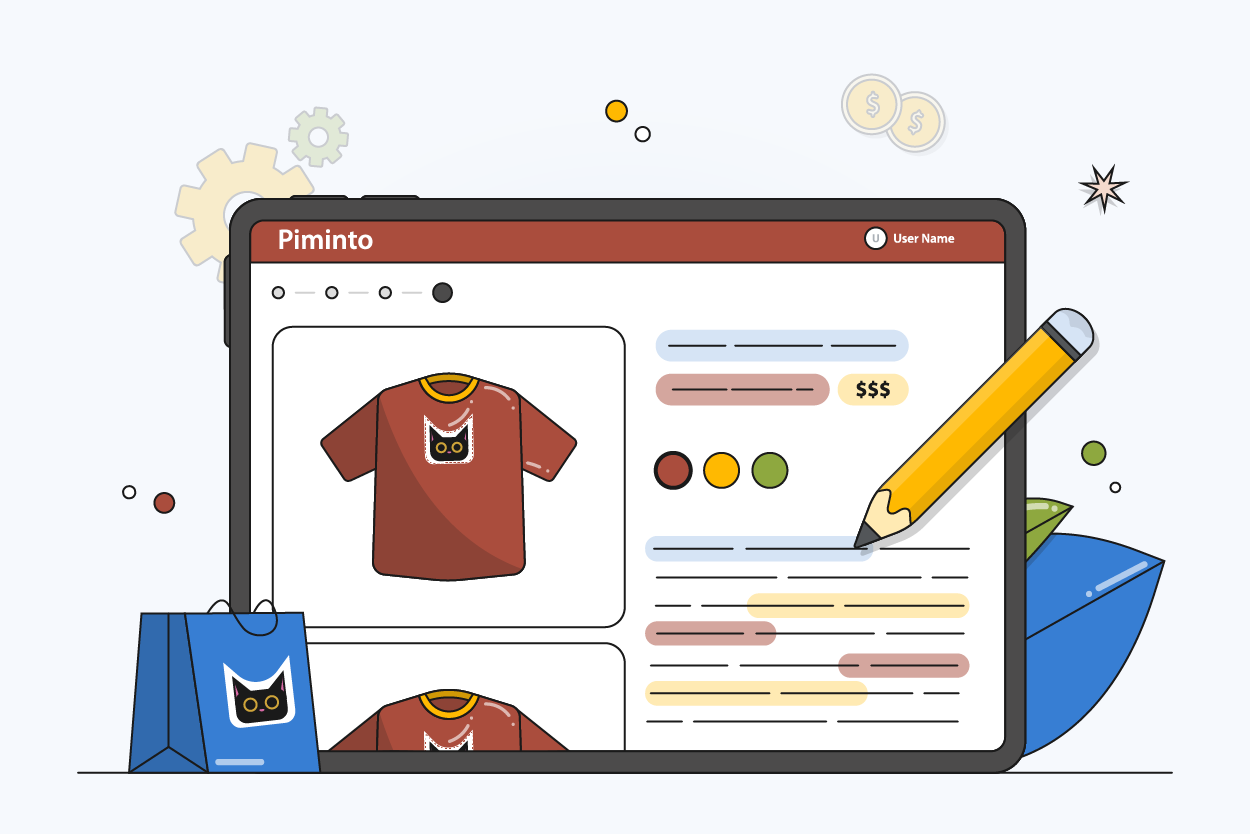Blog » Product Descriptions Optimization: 7 Proven Strategies for eCommerce Success
Product Descriptions Optimization: 7 Proven Strategies for eCommerce Success
Author name: Bradley Taylor
Every word on your product page matters. The right description attracts search traffic, builds trust, and drives sales. Whether you sell on Amazon or your own website, optimized product descriptions act as sales tools that work around the clock to convert visitors into customers.
Most e-tailers still overlook this step. They copy supplier content, overlook keyword optimization, or craft brief descriptions that don't persuade. These mistakes lower rankings and undermine customer trust.
This guide outlines seven methods for developing product descriptions that sell, improve visibility, and remain consistent across all channels. It also illustrates how a Product Information Management (PIM) system simplifies description management at scale.
What Is a Product Description?
A product description informs customers what something is, what it does, and why they need to buy it. It's the bridge between your product and your target buyers, helping to convey value and benefit.
For example, read these two contrasting versions of a water bottle description:
Generic version:
This 32-oz water bottle is leakproof, dishwasher safe, and long-lasting.
Optimized version:
Drink up wherever you go. This 32-oz stainless steel water bottle will keep your beverages cold for 24 hours and hot for 12 hours. Designed for everyday adventures, this one's leakproof, BPA-free, and built to last.
The second definition paints a picture, elicits emotion, and includes keywords like "stainless-steel water bottle" and "BPA-free." It's both SEO-effective and readable by humans, and sprinkled with power words that strike a chord in shoppers.
Why Product Description Optimization is Important to Your eCommerce Business
Product descriptions are often one of the last interactions prior to the final sale. When carefully crafted, they generate visibility, engagement, and revenue.
1. Product Descriptions Drive Search Visibility
Search engines interpret what's on a page using words. Without descriptive keywords, your products are invisible to potential buyers who are searching online.
An SEO product description uses keywords within context so that the page can rank for buyer-intent searches. It is not a matter of filling in all the keywords, but sharing the product in the same words your buyers would.
2. Descriptions Impact Conversion Rates
After a customer finds your page, the following step is to convince them to buy. A well-worded, compelling description dispels uncertainty by answering implicit questions. It tells customers how the product fits their needs and why they need to pay for it.
Minor tweaks can have measurable effects. Rewording a dry, technical statement into a benefit-driven statement has a tendency to increase conversion rates by wide margins.
3. Optimization Reinforces Brand Consistency
Products are showcased across touchpoints in multichannel eCommerce. All platforms have their own formatting rules, yet your tone of description should remain the same. Consistency builds recognition and trust.
A PIM system maintains this consistency by having all information centralized. Instead of rewriting each description manually, your personnel can make edits once and distribute to all channels.
4. Descriptions Optimized for Improved User Experience
Clutter-free typography and easy-to-read content make product pages easier. Customers linger longer and engage more when they can find information in a snap. Time on page is increased, bounce rate is decreased, and customer satisfaction is improved.
7 Strategies to Optimize Product Descriptions Across All eCommerce Channels
Great copy turns a product page into a sales tool. The next seven strategies allow you to generate more conversions, expand visibility, and maintain messaging consistency across your site and each marketplace channel.
1. Know Your Audience & Speak Their Language
Good descriptions start with the audience. Develop a clear buyer persona for each key item: who they are, what they care about, and what they say. If your customer says "lightweight carry-on" and "compression straps," use those phrases in your copy, not corporate jargon.
Importance of Using Persuasive Language
Persuasion draws attention. Use action-suggesting and benefit-relating verbs. Replace vague statements with evidence points, numbers, and sensory facts. Examples: "keeps coffee hot for 6 hours," "folds down to a T-shirt," "smooth, breathable knit."
Quick checklist for persuasive lines:
- Start with the buyer's goal.
- Link every benefit to a result.
- Add one evidence element (material, test score, rating, or guarantee).
- Keep sentences short to allow for easy reading.
Examples of Persuasive Product Descriptions
Use these short, actual brand examples as models for short and effective product descriptions:
- Allbirds Wool Runners: “A true original, our Wool Runner combines soft Merino wool with cloud-like comfort.”
- Glossier Boy Brow: “A creamy, brushable, easy-to-apply brow pomade.”
- Patagonia Nano Puff Jacket: “Weather-resistant, lightweight and packable… stays warm when wet.”
2. Highlight Benefits, Not Just Features
Customers want results: warmer hands, quieter living rooms, faster packing, and less refilling. Begin with those results, then support them with specs.
The Difference Between Benefits and Features
The secret to writing product descriptions that sell is knowing the difference between a benefit and a feature. Features inform us of what something contains; benefits inform us of what that feature does for us. The benefit transforms a technical spec into a reason to buy.
Here's how it may look:
- Feature: "Double-wall vacuum insulation."
- Benefit: "Hot or cold lasts for hours."
- Feature: "100% recycled polyester shell."
- Benefit: "Long-lasting protection with less impact."
Why Benefits Drive Purchase Decisions
Benefits are equivalent to intent. A jogger seeks "no-blister socks" because they want blister-free runs, not just fluffed cotton. A tourist seeks a "lightweight carry-on with compression" because they want fewer bags.
Aligning copy with the purpose of the search increases conversion rate and reduces friction at checkout.
Examples of Benefit-Focused Product Descriptions
The examples below demonstrate how brands translate product features into clear, customer-centered benefits:
- YETI Rambler 20 oz: “Made from durable stainless steel with double-wall vacuum insulation to protect the temp of your beverage.”
- Dyson V15 Detect: “Powerful and intelligent for whole-home deep cleaning. Reveals invisible dust.”
- Away The Bigger Carry-On: “Signature interior compression system that helps you pack, organize and protect more”
How to Write Benefit-Focused Product Descriptions
Use this easy-to-use, repeatable template across your catalog:
- Lead with the outcome.
- Name the feature that makes it possible.
- Add a proof point.
- Close with the next step.
Deliver Consistent Benefits Across Every Channel
Writing benefit-focused descriptions is just the start. Learn how PIM ensures your messaging stays consistent whether customers shop on Amazon, your website, or retail partners.
3. Optimize for Search Engines to Increase Visibility
Even the best-written descriptions won't sell if customers never have a chance to see them. Search optimization ensures your product pages come up when shoppers are actively looking.
Importance of SEO for Product Discoverability
Search engines rely on words to identify relevance. Without SEO copy, even great listings become invisible under the competition. But, done correctly, an SEO product description enables search engines to understand your products and match them with shopper intent.
How to Optimize Product Descriptions for SEO
SEO optimization begins by understanding how your customers are searching. Start by doing keyword research with tools like Google Keyword Planner or Ahrefs to see the exact phrases customers are using.
Insert your principal keywords into prominent positions, including the start of the description or inside bullet points on Amazon. Use related phrases organically within the copy to ensure the description reads well. Keep descriptions unique to avoid duplicate content issues that harm rankings across your catalog.
Examples of SEO-Optimized Product Descriptions
These listings demonstrate how to include relevant keywords without sounding forced:
- Brooklinen Luxe Core Sheet Set: Descriptive phrases like “480-thread-count” and “sateen weave” double as keywords while reinforcing quality.
- Hydro Flask 32 oz Wide Mouth Bottle: Phrases such as “insulated stainless steel” and “keeps drinks cold up to 24 hours” help the listing rank for high-intent searches while appealing to everyday needs.
4. Use Emotional Triggers to Connect with Shoppers
Emotions influence most buying decisions. People recall how something feels long after they've forgotten how it works. Writing that moves the heart makes products memorable and enhances the relationship between customer and brand.

Importance of Emotional Connection in Buying Decisions
Emotional bonding creates trust faster than logic. Comforting words, happiness, confidence, and enthusiasm in product descriptions give buyers something to relate to. If buyers are able to imagine themselves using a product, they will buy it.
Examples of Emotional Triggers in Product Descriptions
Emotion can be expressed through storytelling, sensory detailing, or mission-based wording. Below are some powerful examples from live brands:
- Ritual Essential for Women Multivitamin: The description promises reassurance and trust with phrases like “clean, traceable ingredients” and “support your energy and focus every day.”
- Patagonia Nano Puff Jacket: The product page evokes resilience and adventure: “Warm, windproof and water-resistant… lightweight and highly compressible for travel.”
How to Use Emotional Language Effectively
The following steps provide simple ways to add emotion without overdoing it:
- Identify the dominant emotion your target customer wants.
- Use sensory language to create imagery.
- Include power words that prompt action.
- Stay authentic to your voice. Emotion must fit your brand voice.
5. Centralize Product Data with a PIM System
As your eCommerce catalog grows, keeping product descriptions uniform across multiple channels is no easy feat. Copying updates into all platforms creates errors, stale listings, and inconsistent voice.
PIM prevents this from occurring by keeping all product data, including descriptions, digital assets, and attributes, in a centralized, structured source of truth.
Why Managing Descriptions at Scale Requires PIM
When product data sits in spreadsheets or standalone platforms, updates are too cumbersome. A PIM replaces that manual task with automation and structure, so every channel is fed from the same validated data.
This method improves:
- Efficiency: Update one master record and transmit changes everywhere.
- Accuracy: Make sure specifications, keywords, and price are accurate wherever they exist.
- Consistency: Keep tone and brand voice consistent on all product pages.
- Scalability: Deliver new products to market more rapidly without re-writing or reformatting content for each channel.
How PIM Ensures Consistency Across Channels
Each sales channel has its own format preferences. Amazon prefers concise bullets, while your direct-to-consumer site allows for storytelling and emoting. A PIM system accomplishes both. You can define templates by platform that use the same data fields but present them differently.
Localization becomes manageable too. Instead of wrestling with translation spreadsheets, a PIM connects localised text to its master record. Specs or feature changes trickle to all languages simultaneously, keeping all products consistent.
Integration with AI description tools only improves the efficiency further. Teams can use AI for new SKUs and approve them directly within the PIM, while tone, keywords, and brand standards remain intact.
Examples of PIM-Powered Description Management
PIMinto is utilized by manufacturers and retailers to leverage these workflows to keep their catalogs in sync. Marketing teams manage SEO keywords, product names, and structured copy within a single dashboard. Operations teams handle technical data within the same platform, with both sides speaking the same language.
The result is a single flow: product data enters once, flows through all integrated marketplaces, and displays to customers with unified messaging and complete accuracy. That efficiency translates directly into increased conversion rates and faster go-to-market timelines.
New to PIM? Start with the Basics
Before implementing a PIM system, understand what it is, how it works, and why leading eCommerce brands can't scale without it.
6. Test, Measure, and Refine Ongoing
Product description optimization continues well beyond launch. eCommerce's best teams track performance, test differentiators, and optimize copy based on metrics.
Importance of Ongoing Testing and Optimization
Customer behavior is always in flux. What converts this quarter won't necessarily do the same next quarter. Testing on a regular basis allows you to keep content in sync with search trends, product releases, and seasonal drivers. It also makes each product page stronger by showing descriptions that actually work.
How to Implement A/B Testing for Descriptions
A/B testing pits two versions of the same listing against each other to determine which performs better. One version leaves the existing copy alone; the other creates a small, focused alteration.
Steps to execute effective tests:
- Test one variable at a time.
- Divide traffic equally between A and B versions.
- Track specific results like add-to-cart rate and conversion rate.
- Publish the winning copy and note the results.
Examples of Descriptions Improved Through Testing
Testing different copy of product descriptions reveals what messaging consumers respond to most. In practice, brands can test headlines, tone, or benefit order to see what drives more activity.
For example, a fashion company might test two versions of a headline for a pair of sweatshirts. One might highlight performance, and the other highlights comfort to see which one gets more clicks or add-to-cart action.
A home goods retailer might experiment with title phrasing for a bedding line, comparing a feature-based headline such as “Soft Sateen Sheets” to a benefit-driven one like “Luxury Sheets You’ll Love Sleeping In.”
A technology brand could try reordering copy so that comfort or usability benefits appear before technical specifications. That structure helps shoppers connect emotionally before reading detailed information.
7. Make Your Content Scannable and Easy to Read
Online consumers scan prior to reading. Clear structure, brief paragraphs, and visual hierarchy enable them to get what is important quickly. If your descriptions are scannable, visitors linger on the page and convert more.

Why Readability Impacts Conversion Rates
Readability directly affects how much information the customer will retain. Clusters of solid blocks of text are friction-inducing, but proper formatting inspires confidence and comprehension. Shoppers must understand top benefits, features, and value within seconds.
Formatting Best Practices for Product Descriptions
Use these practices to ensure your descriptions are scannable and consistent on every platform:
- Use brief, concise sentences.
- Break long paragraphs into smaller blocks with a single idea.
- Use bold text for essential benefits and features.
- Add clear headers such as “Key Features,” “Why You’ll Love It,” or “Product Details.”
- Format technical specs or dimensions into concise bullet lists.
- Avoid filler words or long conjunction chains that slow reading.
Examples of Well-Formatted Descriptions
The examples below show how clear structure and concise language improve readability and conversion:
- Glossier Milky Jelly Cleanser: The description appears in two brief sentences before listing ingredients and usage steps. The simple layout mirrors the brand’s minimal aesthetic and is easy to read on mobile.
- Apple AirPods Pro 3: The product page pairs short, benefit-led sentences with bold subheads and visual sections. Each feature is easy to scan and immediately tied to a clear customer benefit.
Is Your Business Ready for PIM?
Take our 2-minute assessment and get personalized recommendations
-
Analyze your current product data challenges
Get instant recommendations based on your business profile
See which PIMinto plan fits your needs
Learn if PIM will solve your specific problems
From Strategy to Implementation
Optimized product descriptions combine creativity, structure, and insight. Transparent, benefit-focused language commands attention. Strong SEO raises visibility. Tonal consistency builds brand trust. All these elements shape the way that consumers think about your products and fuel every purchasing decision.
Managing those aspects across multiple channels requires one source of truth. PIMinto provides that. It consolidates product data into one location, maintains all descriptions in alignment with your brand voice, and allows your team to update listings everywhere from one place.
If your eCommerce business is ready to consolidate product management and scale with confidence, find out how PIMinto PIM solution can lead to faster updates, greater consistency, and better results.
Modified on: 10/20/2025